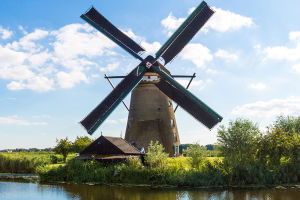Pelican is a collective name for eight species of waterfowl in the genus Pelican. The body length is about 150 cm, with dense and short feathers all over the body, which are white, peachy, or light gray-brown.
1. Morphological characteristics.
The adult pelican is about 1.7 meters long and can weigh up to 13 kg, making it one of the largest birds in existence.
The beak is more than 30 cm long, with the tip of the upper beak bent downward in a hooked shape, and the lower beak has a huge and expandable skin and throat sac. The skin sac is formed by connecting the lower beak shell to the skin and can be freely retracted.
The huge beak and throat sac make the pelican appear top-heavy. When pelicans walk on the ground they always waddle and stagger. The pelican's large beak gets in the way, especially when it catches prey, and the beak and throat sac is filled with seawater, making it difficult to surface.
The pelican's plumage is peachy or light grayish brown. When people see a pelican surfacing, it is always the tail that comes to the surface first, followed by the body and the large beak. Moreover, the pelican must spit out the seawater from its beak before it can take off from the surface.
2. Life Habits.
The pelican is a bird that loves to live in flocks. They prefer to move in groups. Whenever pelicans are fishing in groups, they can be seen diving from the air into the sea.
Pelicans often live in flocks in the wild, spending most of their days on the shore basking in the sun or patiently grooming their feathers, in addition to swimming.
Pelicans are very sharp-eyed and good swimmers and flyers. Even when flying high in the sky, fish roaming in the water cannot escape their eyes.
If a group of pelicans finds a school of fish, they will form a straight line or a semicircle to encircle it and drive it to a shallow place on the river bank.
When the pelican takes off from the water, it first flaps its wings rapidly on the water's surface and paddles its feet in the water. With the huge thrust, the pelican gradually accelerates and then, slowly reaching the speed of take-off, slowly flies into the sky out of the water.
Sometimes, when they have eaten too much, they appear to be so heavy that they cannot take off smoothly and have to float on the surface.
3. Distribution range.
They are found in warm waters around the world, mostly in Asia, Europe, Africa, and Australia.
Pelicans are found on the coasts and along rivers and lakes in many parts of the world. This bird prefers to live in flocks, often moving in rows in groups.
It mainly inhabits lakes, rivers, coastal and marshy areas, barren islands, lagoons, and occasionally ponds and mangroves.
4. Breeding Style.
The breeding life of pelicans is also very interesting. Pairs do not change mates for life after a successful pairing.
Females also perform a series of courtship maneuvers when selecting a male. When approaching a mate, the male often waves his wings and dances, constantly rubs his beak, and grooms his feathers to please his mate.
When the young pelicans hatch, the pelican parents spit out their half-digested food in the nest for the young to eat. When the young pelicans are a little older, the parents open their large beaks and allow the young pelicans to stick their heads into their throat pouches for food.


